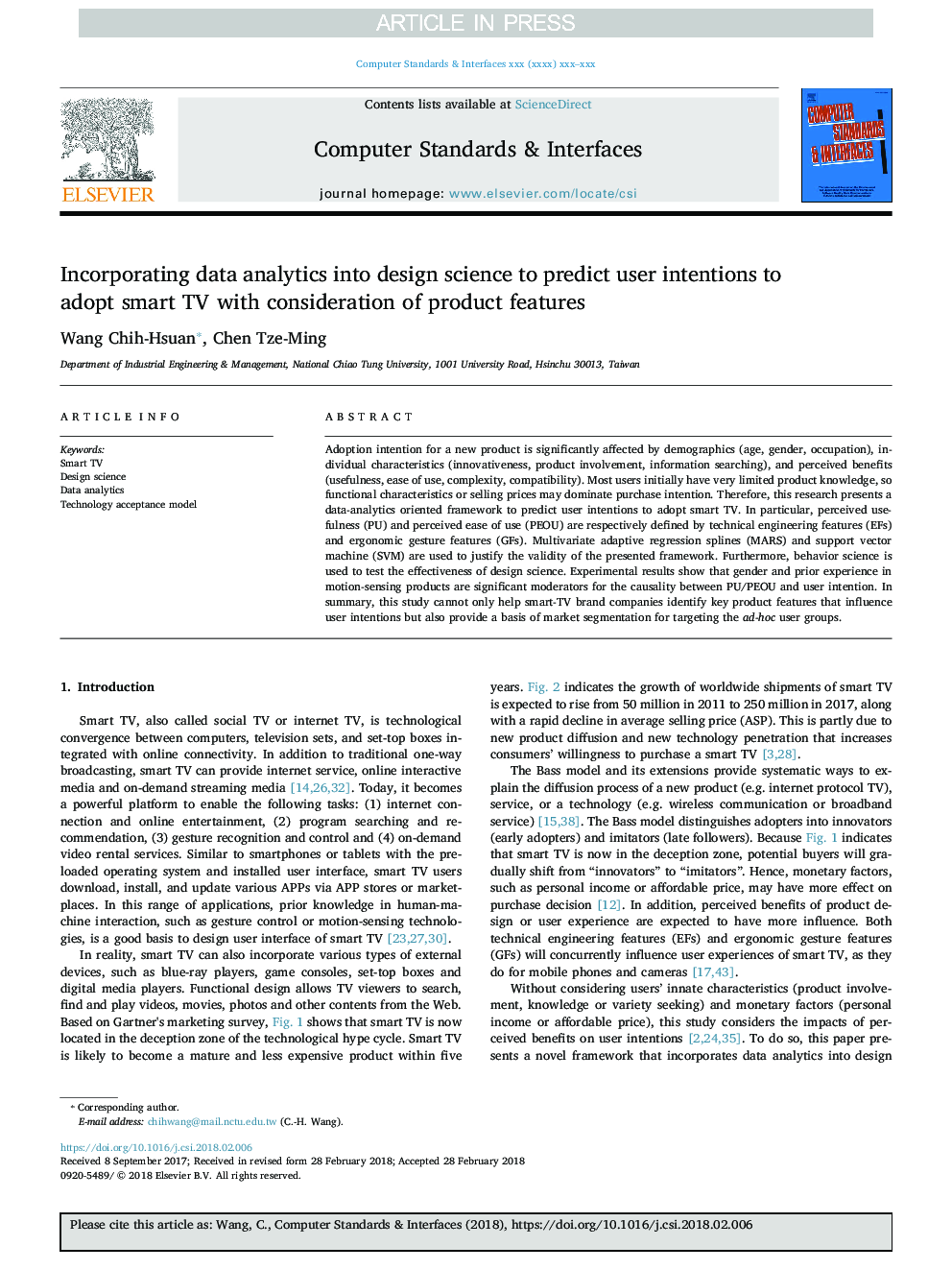| Article ID | Journal | Published Year | Pages | File Type |
|---|---|---|---|---|
| 6883126 | Computer Standards & Interfaces | 2018 | 9 Pages |
Abstract
Adoption intention for a new product is significantly affected by demographics (age, gender, occupation), individual characteristics (innovativeness, product involvement, information searching), and perceived benefits (usefulness, ease of use, complexity, compatibility). Most users initially have very limited product knowledge, so functional characteristics or selling prices may dominate purchase intention. Therefore, this research presents a data-analytics oriented framework to predict user intentions to adopt smart TV. In particular, perceived usefulness (PU) and perceived ease of use (PEOU) are respectively defined by technical engineering features (EFs) and ergonomic gesture features (GFs). Multivariate adaptive regression splines (MARS) and support vector machine (SVM) are used to justify the validity of the presented framework. Furthermore, behavior science is used to test the effectiveness of design science. Experimental results show that gender and prior experience in motion-sensing products are significant moderators for the causality between PU/PEOU and user intention. In summary, this study cannot only help smart-TV brand companies identify key product features that influence user intentions but also provide a basis of market segmentation for targeting the ad-hoc user groups.
Related Topics
Physical Sciences and Engineering
Computer Science
Computer Networks and Communications
Authors
Wang Chih-Hsuan, Chen Tze-Ming,
